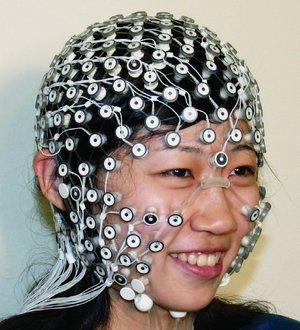Personalised Neurostimulation: HD-EEG-based transcranial stimulation to treat refractory epilepsy patients
Stimulating the brain with implanted electrodes is a successful, but very drastic measure. Researchers from Eindhoven University of Technology, Kempenhaeghe, Philips Neuro and Gent University will therefore be working on a method to stimulate the brain using electrodes that are placed on the head rather than inside it.
Duration
May 2019 - December 2023Project Manager
Perstim
Epilepsy is the most common neurological disorder, which affects approximately 120.000 patients in the Netherlands. The impact of epilepsy is substantial and broad: in addition to seizures, it may cause cognitive problems and psychological complaints, and has negative socio-economic consequences, which puts a heavy burden on individual health and quality of life as well as on society. In a lot of cases, seizures are hard to treat using traditional methods (medication, resection). In spite of treatment with anti-epileptic drugs, approximately 30 percent of patients do not become seizure free (refractory epilepsy).
For this reason, neurostimulation techniques, such as vagus nerve stimulation and deep brain stimulation, have received increasing clinical attention. In this project, we investigate a non-invasive neurostimulation technique which provides much less of a burden for patients, namely tDCS/tACS based on a high-density EEG system (EGI GTEN Neuromodulation System). The high spatiotemporal resolution of the system, together with the possibility for stimulation allows for personalized stimulation protocols. In this project, we will investigate how we can effectively personalize HD-EEG-based neurostimulation for patients with focal epilepsy in the following steps:
• develop a personalized computational model to accurately reconstruct the epilepsy focus;
• determine and optimize stimulation parameters to reach the desired focus;
• determine the optimal read-out to assess the stimulation effect.
These steps in the project are based on tight technical-clinical cooperation and integration of the obtained results in clinical trials. Ultimately, we aim to apply the developed personalized neurostimulation techniques to provide refractory (and also non-refractory) epilepsy patients better quality of life.

Stimulating the brain with implanted electrodes is a successful, but very drastic measure. Researchers from Eindhoven University of Technology, Kempenhaeghe, Philips Neuro and Gent University will therefore be working on a method to stimulate the brain using electrodes that are placed on the head rather than inside it. Their goal is to customize treatment for patients with severe epilepsy. The basic idea of the project, called PerStim, is simple, says Paul Boon, clinical research leader and professor at UGent and TU Eindhoven. "When we have located the source of the seizure, we target an electrical stimulus at that spot that is exactly the opposite of the measured activity. As a result, the seizure should be 'extinguished'. We will investigate this with both direct and alternating currents." Read more